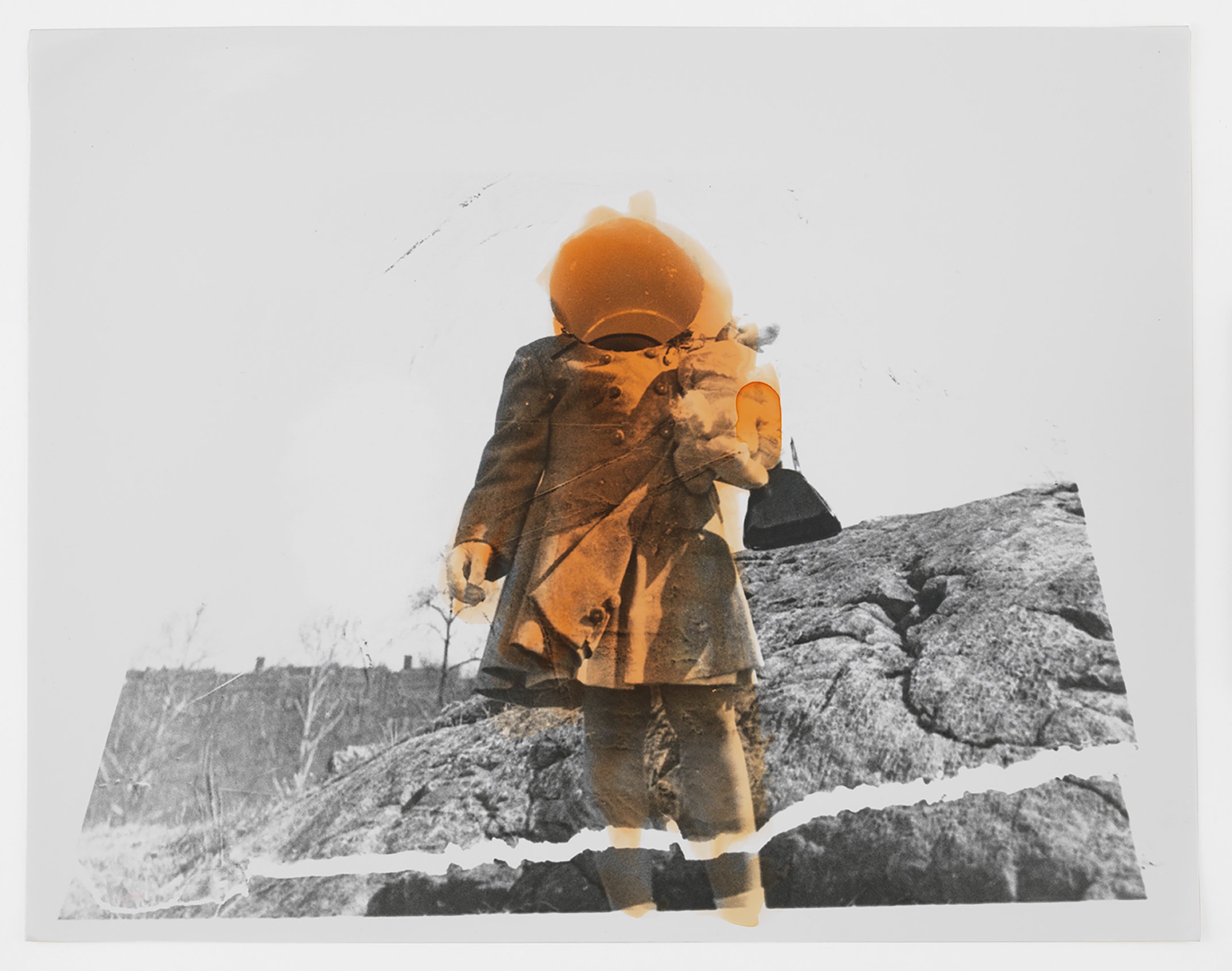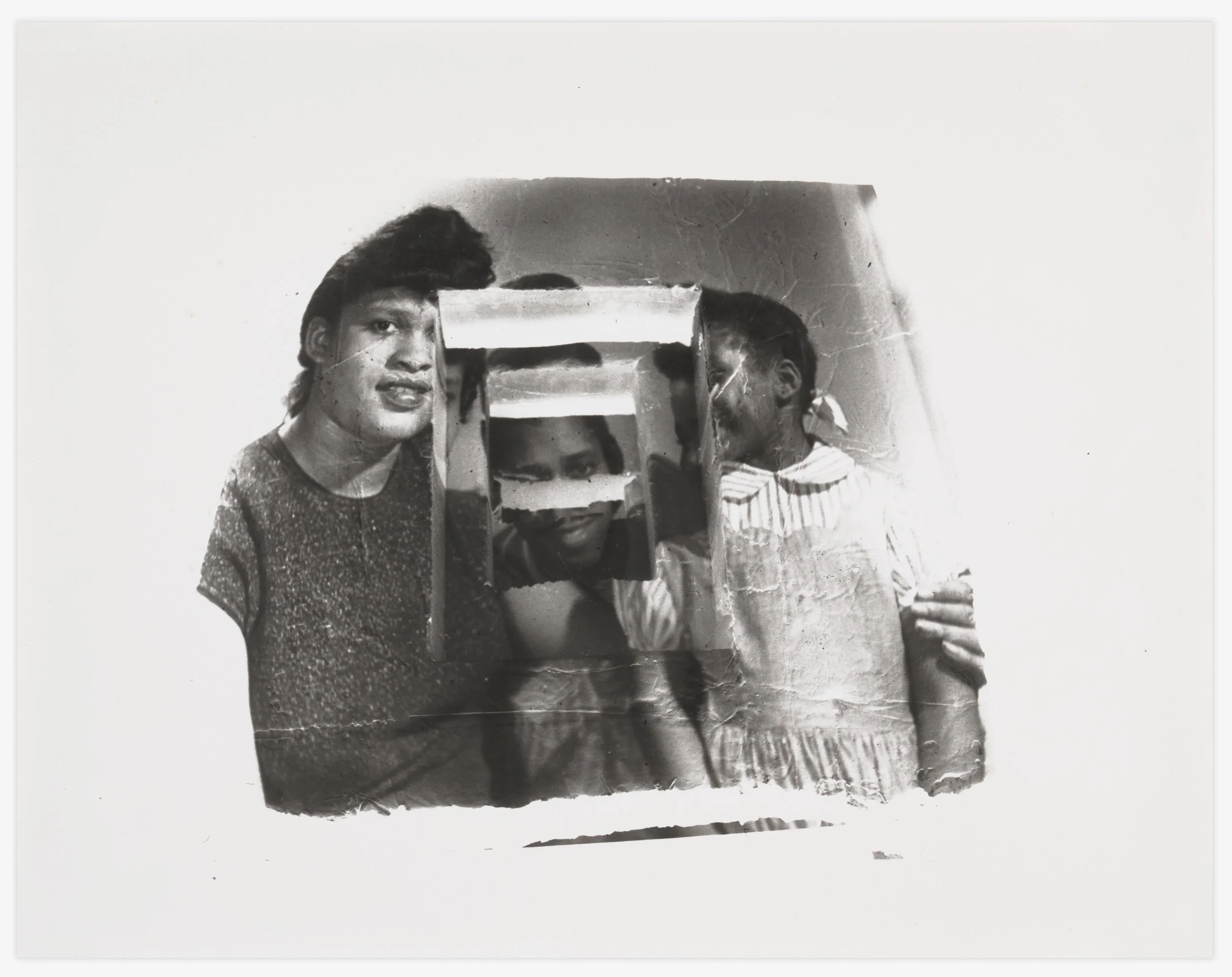Darrel Ellis: Regeneration | Milwaukee Art Museum
Darrel Ellis, Untitled (Laure on Easter Sunday) ca. 1989–1991. Gelatin silver print with colored ink. Milwaukee Art Museum, purchase, Herzfeld Foundation Acquisition Fund M2023.284. © The Darrel Ellis Estate
Written by Jania Marissa
Photo Edited by Kit Matthews
Darrel Ellis: Regeneration is co-organized by the Baltimore Museum of Art and The Bronx Museum of the Arts.
Milwaukee Art Museum recently hosted the first-ever large-scale display of Darrel Ellis’s work. Titled “Darrel Ellis: Regeneration, “Ellis’s life, psyche, and narrative are explored through photography, painting, and print making. Darrel Ellis was a trailblazer with his innovative and evocative expressionist art exploring blackness, masculinity, and life itself. Ellis’s life was cut short at the young age of 33 due to the AIDS epidemic. Then, his career- along with him- was prematurely ended. Exploring “Darrel Ellis: Regeneration,” we can see a wide range of the works of Ellis and better understand him as an man, artist, and human.
Darrel Ellis, Untitled (Aunt Connie and Uncle Richard) ca. 1989-1991. Gelatin silver print. Private collection ©The Darrel Ellis Estate
When looking at the works in the show, the commonality of identity is overarching. Looking at the several self-portraits, there is an intimacy in the composition of the photographs. The eyes reflect a vulnerability and awareness in the subject as Ellis. Ellis’s expression conveys a voyeuristic pull, where he is aware that we are looking at him and he wants us to do the same.
Darrel Ellis, Self-Portrait After Photograph by Robert Mapplethorpe, ca. 1989. Acrylic on canvas, 60 in. x 42 in. (152.4 x 106.68 cm.). Glenstone Museum, Potomac, Maryland. © The Darrel Ellis Estate
Looking at, “Darrel Ellis, Self-Portrait After Photograph by Robert Mapplethorpe, ca. 1989.,” Ellis’s eyes stare directly at the viewers. His face is angled right to the camera lens yet juxtaposes both strength and vulnerability. Of intensity and fragility, a beautifully composed portrait that allows the interconnectedness of blackness, masculinity, and self to be captured in a single image. This work is a recreation of the photography of Ellis-after the notable American black and white photographer, Robert Mapplethorpe, who mainly worked with black and white portraiture. Mapplethorpe was affected by the AIDS epidemic-with his life and career further cut short prematurely from AIDS related complications. The connection between both artists in the same piece carries a heavy and important presence of the epidemic’s effect on the lives and art of the people within the New York City Contemporary Art Movement.
Darrel Ellis, Untitled (Self-Portrait) ca. 1980–1991. Black ink and wash on paper with prepared ground. Collection of Robert Lowinger. © The Darrel Ellis Estate
An additional self-portrait is “Untitled (self-portrait)” ca 1980-1991. This piece is unique due to the expression in its subject, Ellis. He has his chin down, head angled so only one side of his face is fully exposed. Here, the eyes hold emotion seemingly of ambiguity within its vulnerability. We cannot see his arms or hand, but his shoulders and face with a closed-mouth stare. When making eye contact with the portrait, it's as though he has caught us, the viewer, looking at and watching him as he holds us within his stare. It's a highly evocative and expressionistic portrait of potential exploration. To try to understand- What is he thinking? How does he feel? Other works in the show are equally captivating, despite the subject matter not as self-portraiture.
Darrel Ellis, Untitled (Woman with Leopard Skin) ca. 1988–1991. Chromogenic print. Courtesy of The Darrel Ellis Estate, Hannah Hoffman, Los Angeles, and Candice Madey, New York. © The Darrel Ellis Estate
“Untitled (Woman with Leopard skin)” ca. 1988-91 and “Untitled Laure on Easter Sunday)” ca. 1989 are examples of Ellis’s printmaking, mixed-media style. Both the color contrast and vibrancy in the “Woman with Leopard Skin”, add drama and ethereal beauty to it The usage of gold conveys luxury and opulence, whilst the stark black background of the print is an endless void of darkness. In doing so, the gold, teal, and brown of the piece pop up and catch one’s eye. The metaphor of the piece is not conveyed literally, but rather metaphorically conveys the title of the print. In “Laure on Easter Sunday” the colored ink print is a silhouette of a woman with manipulation to allow further abstractness and ambiguity. There is an orange coloring spread over the woman's silhouette, concreted at the head, while fading as it spreads to her cut- off feet. Intentionality in color, space, and configuration give each print narrative and story that the viewer must explore individually.
Darrel Ellis, Untitled (Mother, Father, and Laure), 1990. Gelatin Silver Print. Private collection, courtesy of OSMOS, New York. © The Darrel Ellis Estate
All in all, these prints are literal and explicit, allowing their beauty, introspection, and alluring quality. Darrel Ellis: Regeneration is co-organized by the Baltimore Museum of Art and The Bronx Museum of the Arts.













